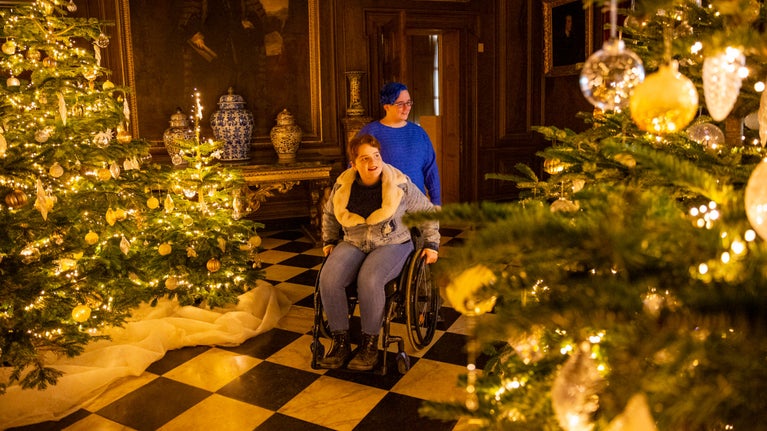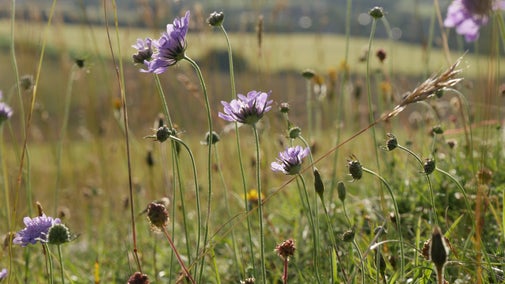
Where will you visit next?
Discover lots of gardens, historic houses, days out at the coast and more.
A popular but unspoilt beach of pebbles and sand backed by incredible twisted cliffs.
near Bude, Cornwall

| Asset | Opening time |
|---|---|
| Countryside | Dawn - Dusk |
Toilets open April to October. Please check for Sandymouth Café opening.
| Ticket type | With Gift Aid | Without Gift Aid |
|---|---|---|
| Whole day | £9.00 |
Sandymouth Café (tenant run) is the perfect place to enjoy a drink, bite to eat or ice cream. Serving food throughout the day.
Café - more informationOpen dawn until dusk. No overnight camping or parking.
Dogs welcome under control, particularly around livestock and cliff edges
Seasonal RNLI lifeguard cover
Lifeguard - more informationUneven ground/steps to the beach. Blue Badge parking and accessible toilet. Level but uneven surface to café/toilet. Poor phone signal.
Mostly level access, with natural surfaces, from the lower car park to the café
Coastal and inland paths which may be uneven in places, and with kissing gates
Car park - what3words: ///mutual.afterglow.simply
Sandymouth Café (not National Trust) serves a range of food, snacks, cakes and drinks throughout the day. Here is a link to their Facebook page where you can find their opening times and menu.

Under-control dogs are welcome at Sandymouth. Find out more about planning a visit here with your four-legged friend, including details of the Canine Code. Sandymouth is a two pawprint rated place.

A tidal beach. Pebbles and rocks lining the top, with sand becoming visible at low tide.
Cliffs of twisted rock formed 300 million years ago, with coastal paths linking to Duckpool and Northcott Mouth.
Views overlooking the beach and serving breakfast, hot and cold lunches, cream teas and ice cream.
Sandymouth is a popular and unspoilt beach but can be very tidal. Find out how not to get caught out by the tides and also discover what’s on offer for you to do during your visit.

After your walk along the beach or coast path, pay a visit to Sandymouth Café (not National Trust) for a hot drink or bite to eat while enjoying the views of North Cornwall.

A walk from Sandymouth to Duckpool along the South West Coast Path taking in sweeping coastal views. This walk can start from Sandymouth or Duckpool.

This circular trail offers walkers contrasting landscapes as it follows the coast from Sandymouth to Duckpool before heading inland to historic Stowe Wood.

Sorry, there are no upcoming events at this place
Sandymouth sits along a stretch of coast between Bude and Morwenstow, one of Cornwall's wild and dramatic corners with a character all of its own.
With a dramatic backdrop of sheer cliffs dating back millions of years, and a pebble ridge at the top of the beach with sand exposed as the tide recedes, Sandymouth is popular amongst surfers and rock-poolers alike.
Whether you're looking for a short stroll or a more challenging walk there are many exhilarating coastal walks to enjoy. The South West Coast Path offers walkers cliff top views stretching for miles, past Bude and beyond Tintagel.
Learn more about the intriguing history of the Grenville family, owners of a fine mansion that stood for 60 years at Stowe Barton, just a few miles from Sandymouth.
You’ll find coastal grasslands, as well as flowers such as thrift and sea campion. There are rock pools aplenty along this stretch of coast with colourful creatures to spot, and not forgetting the chance of catching sight of a dolphin or basking shark out to sea, or a peregrine falcon or buzzard overhead.
Discover how the rangers look after Sandymouth for wildlife and visitors.

We are working to create 250 hectares of new species rich grassland at National Trust sites across Cornwall. The project, due to be completed by 2026, will help us rise to the twin challenges of biodiversity loss and climate change.
Thanks to funding from the European Agricultural Fund for Rural Development, improvements have been made at Sandymouth to help make the South West Coast Path a year-round experience. Find out about other nearby places that have benefitted.


Search for live volunteering opportunities, or register your interest with Sandymouth.


Discover lots of gardens, historic houses, days out at the coast and more.
By sharing your email address you’re agreeing to receive marketing emails from the National Trust and confirm you’re 18 years old or over. Please see our for more information on how we look after your personal data.